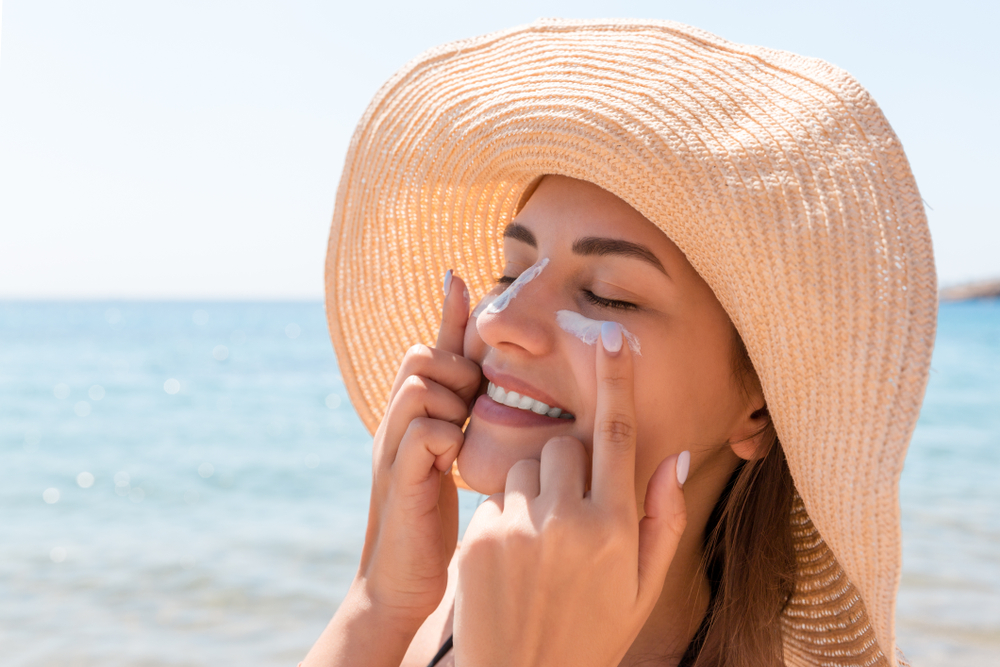
Sunblock is an essential skincare product that protects the skin from harmful UV rays. People with oily skin often find it difficult to choose the right sunblock because many products can make the skin greasy or clog pores. Using a suitable sunblock for oily skin can help protect your skin from sun damage while also keeping it fresh and shine-free.
Why Oily Skin Needs Special Sunblock
Oily skin produces more sebum than normal skin. This can lead to shiny skin, breakouts, and clogged pores. Regular sunblocks are often thick or greasy, which can make these problems worse. A sunblock made for oily skin should be lightweight, non-comedogenic, and oil-free. This helps prevent clogged pores and breakouts while offering full sun protection.
How Sunlight Affects Oily Skin
Sunlight contains ultraviolet (UV) rays. These rays can damage the skin, speed up aging, and increase the risk of skin cancer. For oily skin, sun exposure can also lead to more oil production and worsen acne. Using a proper sunblock creates a barrier on the skin that reflects or absorbs UV rays and prevents them from reaching deeper layers.
Types of Sunblock for Oily Skin
There are two main types of sunblocks:
1. Physical Sunblock:
This kind of sunblock sits on top of the skin and reflects UV rays. It usually contains ingredients like zinc oxide or titanium dioxide. It is less likely to cause irritation and is a good option for sensitive and oily skin.
2. Chemical Sunblock:
This type absorbs into the skin and then absorbs UV rays, converting them into heat and releasing them from the body. It feels lighter on the skin, which is often preferred by people with oily skin.
Both types can be used on oily skin, as long as the product is oil-free, lightweight, and non-comedogenic.
Features to Look for in Sunblock for Oily Skin
When choosing sunblock for oily skin, check for the following features:
-
Oil-free formula: Prevents extra shine and greasiness.
-
Matte finish: Helps reduce the oily look throughout the day.
-
Non-comedogenic: Does not block pores or cause acne.
-
Lightweight texture: Gel or water-based formulas feel lighter on oily skin.
-
SPF 30 or higher: Gives better protection from harmful sun rays.
-
Broad-spectrum protection: Shields from both UVA and UVB rays.
-
Fragrance-free: Reduces the risk of irritation for sensitive skin.
How to Use Sunblock for Oily Skin
Follow these simple steps to use sunblock the right way:
-
Cleanse your face: Wash your face with a cleanser made for oily skin.
-
Apply moisturizer (optional): If your sunblock is not moisturizing, apply a light, oil-free moisturizer.
-
Apply sunblock: Take a small amount of sunblock and spread it evenly on the face and neck. Do not forget ears and other exposed areas.
-
Wait before sun exposure: Apply the sunblock at least 15 minutes before going outside.
-
Reapply as needed: Reapply every 2-3 hours, especially if you sweat or wash your face.
Common Mistakes to Avoid
Many people make mistakes when using sunblock. Here are some common errors and how to avoid them:
-
Using too little product: Always use enough sunblock to cover all exposed areas.
-
Skipping cloudy days: UV rays can pass through clouds, so sunblock is needed even when it is not sunny.
-
Not reapplying: Sunblock wears off with sweat or after a few hours. Reapply to maintain protection.
-
Applying only once a day: For oily skin, reapplication is even more important as oil and sweat can remove sunblock.
Benefits of Using Sunblock for Oily Skin
Here are some of the top benefits:
-
Sun protection: Reduces the risk of sunburn, dark spots, and skin cancer.
-
Prevents excess oil: A good sunblock controls oil production and gives a matte look.
-
Avoids acne breakouts: Proper sunblock keeps pores clear and reduces the chance of pimples.
-
Slows aging signs: Protects against early signs of aging such as wrinkles and fine lines.
-
Improves skin tone: Protects from darkening and helps maintain a more even skin tone.
How to Choose the Right Sunblock for You
Each person’s skin is different, so a sunblock that works for one person may not work for another. Here are a few tips to help you choose:
-
Do a patch test: Try the product on a small area of your skin before using it on your full face.
-
Read the label: Check for ingredients that are safe for oily skin.
-
Avoid thick creams: Choose gels, fluids, or lightweight lotions.
-
Check for mattifying ingredients: Some sunblocks have ingredients that control shine.
Ingredients That Help Oily Skin
Some ingredients are especially good for oily skin in sunblock:
-
Niacinamide: Helps control oil and reduces inflammation.
-
Zinc oxide: Offers sun protection and controls sebum.
-
Silica: Absorbs excess oil and gives a matte finish.
-
Green tea extract: Reduces oiliness and soothes the skin.
-
Aloe vera: Keeps skin hydrated without clogging pores.
Daily Sun Protection Routine for Oily Skin
Here is a simple routine that can help:
-
Morning:
-
Cleanser
-
Toner (optional)
-
Lightweight moisturizer (oil-free)
-
Sunblock
-
-
Daytime:
-
Blot oil with oil-absorbing sheets
-
Reapply sunblock after 2-3 hours
-
-
Evening:
-
Cleanser
-
Toner
-
Treatment product (if any)
-
Oil-free moisturizer
-
Conclusion
Using a sunblock made for oily skin is a smart step in any skincare routine. It protects your skin from the harmful rays of the sun without making your face greasy. Look for products that are light, oil-free, and give a matte finish. Use it daily, not just in summer or on sunny days. With regular use, your skin will stay protected, feel healthier, and look clearer over time. Finding the right sunblock may take some testing, but once you find it, it becomes an important part of keeping your skin safe and fresh every day.
Comments on “Best Sunblock for Oily Skin That Controls Shine and Protects”